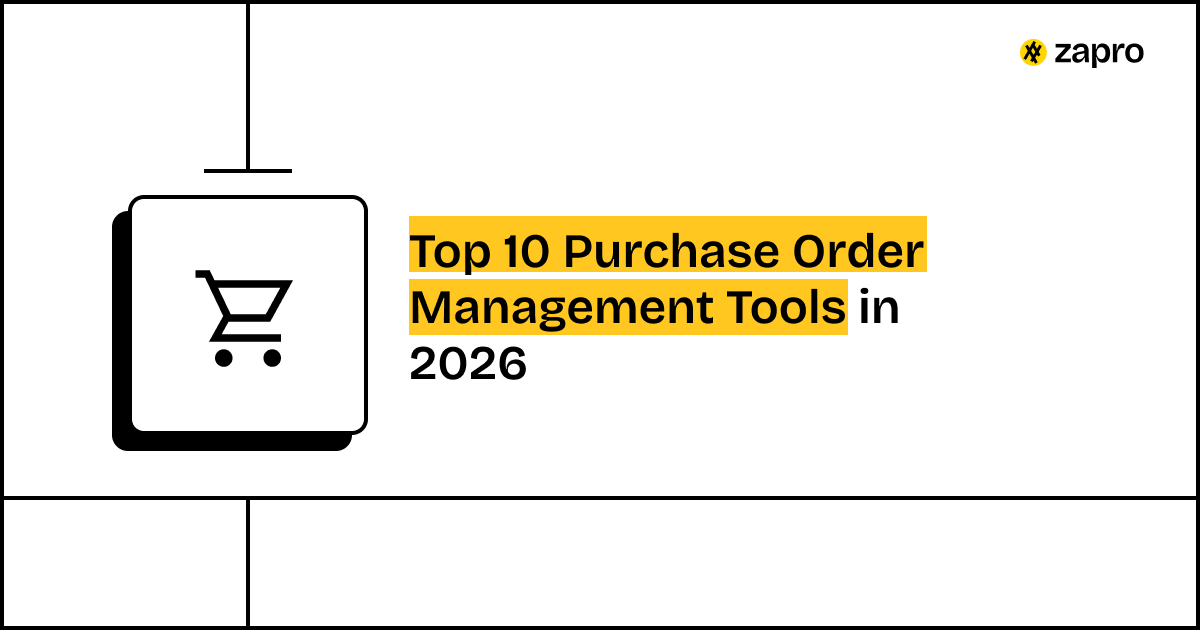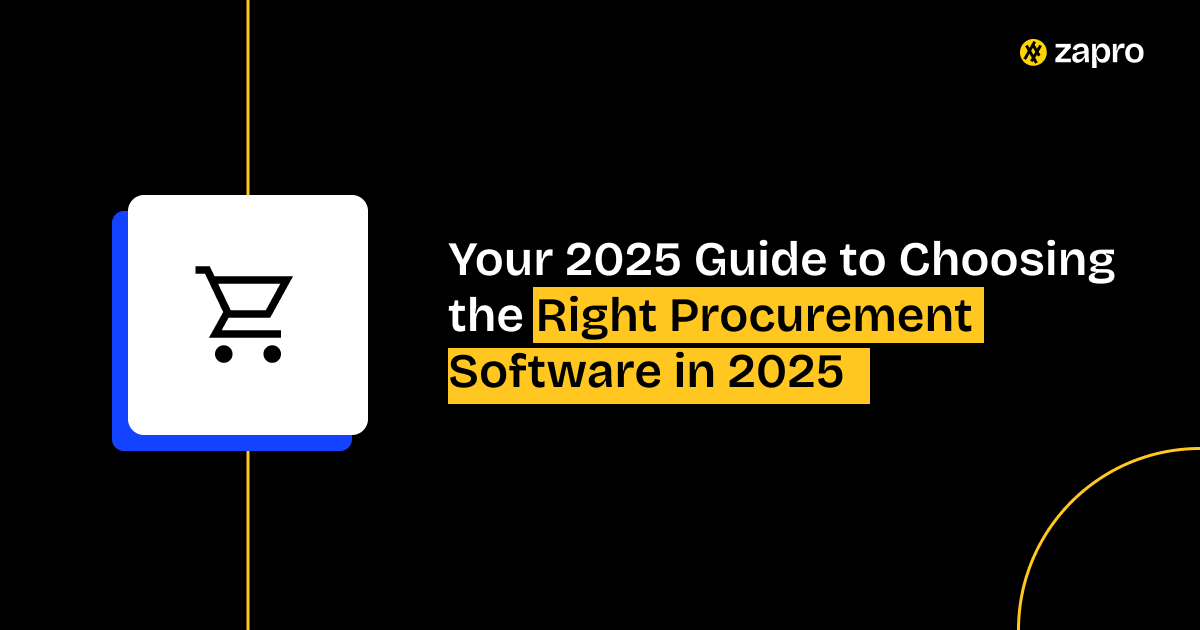Introduction: Why Integration Matters More Than Ever
The data-driven fast-paced procurement world would no longer wait for siloed systems; it demands for better systems integration. The communication delay between the procurement tools, ERP, and financial systems paves the way for delays, duplicate data entry, reporting lags, and missed opportunities.
The integration of Procurement ERP serves as the perfect solution.
While many see procurement, finance, and ERP systems integration as a tech upgrade, it actually helps improve workflow efficiency while enhancing regulatory compliance. The integration is a strategic move, as it would provide better data transparency to enable real-time informed decision making.
A recent research study states that companies integrating procurement and financial systems are lowering their procurement costs between 10–15% because of better visibility and control.
The Foundation of Integrated Procurement
Why Integrate Procurement with ERP and Financial Systems?
At a high level, integrating procurement with ERP and finance systems allows organizations to link their internal data points. Here’s what that looks like in practice:
- All stakeholders maintain real-time access to spend data together with budget information and vendor performance metrics.
- The system reduces manual errors through automated data synchronization.
- The procurement process becomes more efficient because it allows financial reports to be created at a faster rate through P2P (procure-to-pay) operations.
- The system enhances compliance by following both organizational policies and regulatory standards.
- The unified analytics system combined with spend insights enables organizations to make better strategic decisions.
The integration is like a transition from basic mobile phones to advanced smartphones which delivers faster and more connected and intelligent functionality.
Key Data Flows and Touchpoints
The information exchange operates seamlessly when systems are integrated with each other. The key data transfer points between procurement systems and ERP/finance systems consist of:
- Requisitions
- Purchase Orders (POs)
- Goods Receipts & Delivery Confirmations
- Invoices & Approvals
- Payment Statuses
- Vendor Master Data & Contracts
- General Ledger (GL) Codes & Budgets
The procure-to-pay ERP lifecycle benefits from these essential touchpoints to enable financial control and accurate reporting through synchronized workflows.
Common Integration Challenges (And How to Solve Them)
Integration presents multiple advantages yet the process often faces various obstacles. The following section presents typical integration issues alongside solutions to overcome them. Here are the challenges and their solutions:
| Challenge | Solution |
| Legacy systems that lack modern APIs | Use middleware or iPaaS platforms to bridge gaps |
| Data silos and inconsistent formats | Establish master data governance and standardized fields |
| Security concerns around data sharing | Implement secure protocols, access controls, and audits |
| Limited collaboration between departments | Involve key stakeholders from IT, finance, and procurement software early |
| Unclear integration strategy | Start with a clear roadmap and business objectives |
Integration is like solving a puzzle—you need all the right pieces and a clear picture of the final outcome.
Learn about procurement challenges.
Best Practices for Seamless Procurement-ERP Integration
Ready to integrate? Keep these best practices in mind:
- Define your integration goals – What problems are you solving?
- Choose the right integration method – APIs, connectors, or middleware?
- Establish data governance – Clean, standardize, and map your data.
- Involve stakeholders early – Get finance, IT, and procurement on the same page.
- Test thoroughly – Pilot integrations before full deployment.
“Successful integration projects start with a clear understanding of business needs and meticulous data mapping, not just selecting the right technology,” says Mike Jones, ERP Consultant.
Learn about best procurement software.
The Future of Integrated Procurement & Finance
The future is bright and integrated.
The combination of AI technology with blockchain and API-first architectures has transformed procurement and finance operations into an intelligent unified system which generates real business value.
· AI-driven insights forecast demand, reduce waste, and power smarter vendor decisions.
· The composable ERP system enables businesses to construct customized best-of-breed technology solutions that match their operational needs.
· API-first infrastructure enables faster and cleaner and more scalable integrations than ever before.
· The implementation of blockchain technology provides businesses with unmatched security and transparency during transactions.
· The unified data system provides accurate forecasting capabilities and enhances business agility while lowering operational risk.
Unified data enables accurate forecasting, greater agility, and lower operational risk

By 2027, more than 70% of recently implemented ERP initiatives will fail to fully meet their original business-case goals— and as many as 25% of these will fail catastrophically.
How Zapro.ai Makes Integration Easy
Zapro.ai’s Integration Capabilities
Zapro.ai is built for seamless integration with your existing ERP and accounting platforms. Whether you use SAP, Oracle, NetSuite, or QuickBooks—Zapro.ai offers:
- Pre-built connectors
- Robust, flexible APIs
- Bi-directional data synchronization
- Secure and compliant integration architecture
→ Explore Zapro.ai integrations
Zapro.ai Features for Unified Procurement & Financial Data
With Zapro, everything from procurement to payments flows through one intelligent platform:
- Automated invoice matching
- Real-time budget tracking
- General ledger (GL) coding automation
- End-to-end visibility into spending
- Approval workflows integrated with finance
Case Study: How a Leading Client Gained Real-Time Spend Visibility
A global manufacturing company needed tighter spend controls. They turned to Zapro.ai to integrate their procurement with SAP ERP.
The result?
- 95% invoice match rate
- Elimination of manual PO entry
- 30% reduction in approval cycle times
- Real-time visibility into budget vs. actuals
The Business Case for Integration
Calculating the ROI of Procurement-ERP Integration
With Zapro.ai, the ROI is clear:
- Lower operational costs by reducing manual work
- Better compliance through automated tracking and reporting
- Stronger forecasting with integrated spend and financial data
- Improved supplier relationships with faster, more transparent payments
Checklist for Choosing an Integrated Procurement Platform
Here’s what to look for when evaluating solutions:
- ERP compatibility (SAP, Oracle, NetSuite, etc.)
- Secure API access & authentication
- Real-time data sync
- Scalability for future growth
- Built-in compliance & audit trail features
- User-friendly dashboards & reporting
- Vendor master data management
Why Zapro.ai is the Smart Choice?
Zapro.ai stands as your ideal partner for transforming procurement into a strategic powerhouse which operates in perfect alignment with your ERP and finance systems. Zapro.ai provides you with a unified platform that enables smarter and faster procurement management through connected processes.
· The platform unites procurement and finance data into one source which provides your team with a unified truth for operations.
· The platform integrates quickly with major ERPs including SAP, Oracle and NetSuite through fast and effortless connections that avoid complex IT implementation.
· The system provides real-time monitoring capabilities and automated processes which help organizations streamline approvals and enhance compliance while reducing manual mistakes.
· The platform offers enterprise-level security together with dedicated support services that work for any complex system structure.
Zapro.ai integrates seamlessly into your existing ecosystem to provide improved functionality. Your organization needs future-proof procurement strategy implementation. Let’s make it happen.
→ Get in touch with our team
→ Book a demo
FAQs
1. What is ERP integration in procurement?
The integration of procurement tools with ERP and financial systems constitutes ERP integration in procurement. Real-time data sharing occurs through this system which enables smooth workflows and improved departmental visibility.
2. What are the biggest benefits of integrating procurement with finance?
The integration results in reduced manual mistakes and enhanced reporting speed and precision together with improved compliance standards. Finance teams gain improved control and better visibility into spending through this integration.
3. What are common challenges in procurement system integration?
The main challenges organizations face during integration include data silos together with outdated legacy systems and incompatible data formats. The absence of stakeholder collaboration tends to prolong the integration process.
4. How does Zapro.ai integrate with SAP/Oracle/NetSuite?
Zapro.ai provides pre-built connectors together with powerful APIs that enable seamless integration with leading ERP systems including SAP, Oracle and NetSuite. The integration process becomes fast and secure and scales well.
5. What is master data management in the context of procurement integration?
Master data management maintains the accuracy and consistency of essential information such as vendor details and item descriptions and GL codes throughout all systems. The system prevents errors while maintaining proper alignment between different systems.
6. How can integration improve compliance in procurement?
The integration system implements procurement policies automatically through approval workflows and audit-ready records. The system decreases non-compliance risks while enhancing accountability standards.
Integrate Smarter — Start Your Seamless Procurement Journey Today!

Don’t miss our weekly updates
We’ll email you 1-3 times per week—and never share your information.

 Healthcare
Healthcare Financial Services
Financial Services Technology
Technology Venture Capitalist
Venture Capitalist Chief Procurement Officer
Chief Procurement Officer Chief Financial Officer
Chief Financial Officer




